Lake Taupo and Other North Island Wonders
This is the third full day of the March 2025 Adventures Abroad New Zealand tour and if it’s anything as action packed as yesterday’s Maori themed events, it will be something to remember. We will be travelling from Rotorua through the most volcanic area of the country on a portion of the Thermal Explorer Highway to arrive in the nation’s capital Wellington. There will be multiple stops along the way including Lake Taupo, Huka Falls and Tongariro National Park, the first in New Zealand and home to a Lord of the Rings location that fans will instantly recognize.
However before setting out, I went for a walk along the Rotoru lakefront in the early morning to check out the avifauna. Being an avid birder I always do my best to spend as much time as possible looking for life listers in every new country I visit. In my experience there are always a few birders other than myself on these AA trips.

This juvenile black swan absolutely refused to keep his head out of the water long enough to get a good shot.
Of more interest was this raft of New Zealand scaup. Time and again I saw this behaviour whereby the ducks consistently maintain an equal distance from each other while sleeping, which they seem to do most of the time. It’s not something I’ve noticed in any other species of waterfowl.
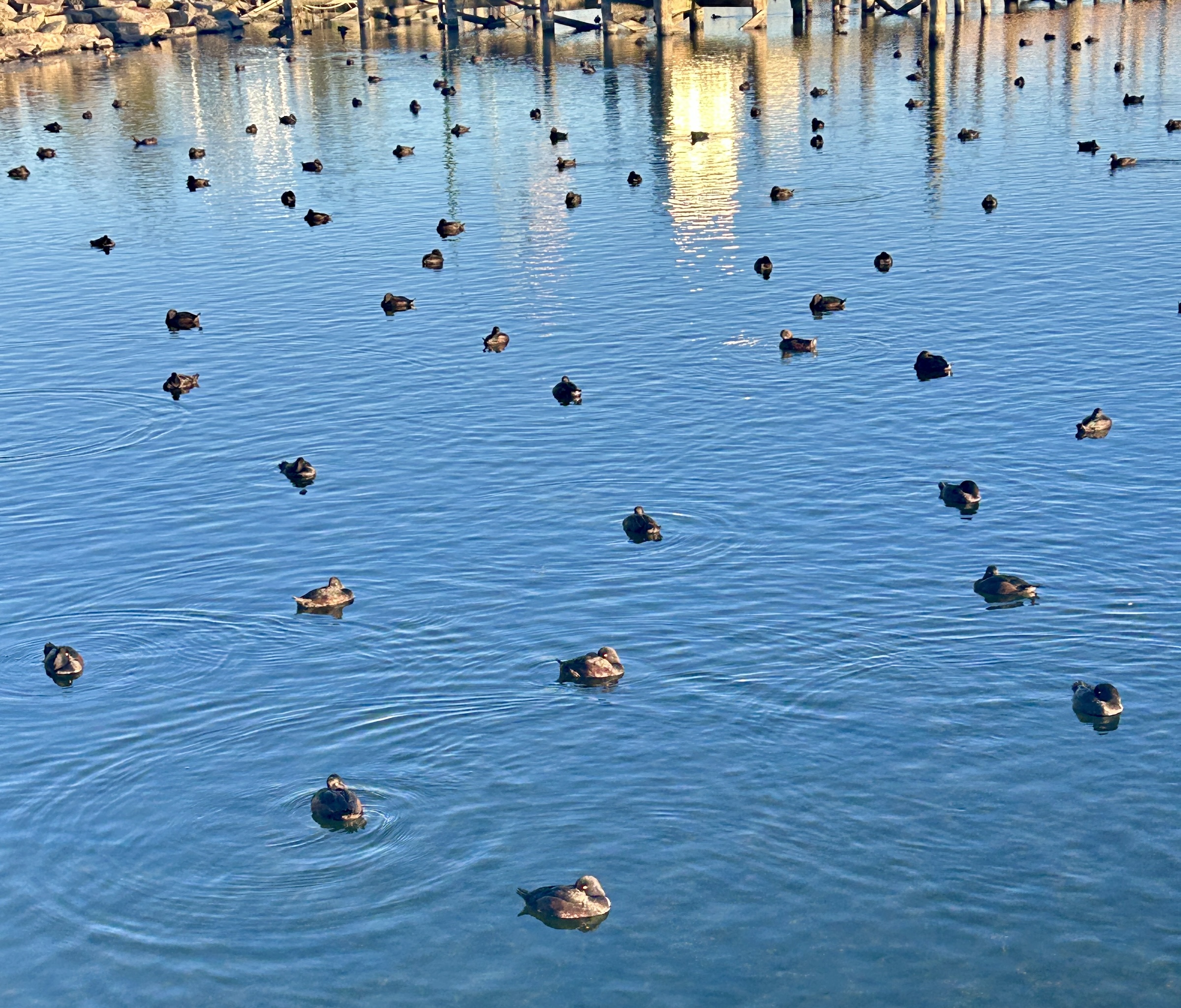
Ok, put the binocs away and let’s get going.
It’s 453 kms. (281 miles) from Rotorua to Wellington so there’s a fair amount of driving today. This is the route we will be following with most of the stops on the first third of the journey.
Yesterday we visited the geothermal fireworks at Te Whakarewarewa Thermal Valley and today as we head south from Rotorua the evidence of geothermal activity is everywhere. The Taupo Volcanic Zone is the largest on the planet and has been active for over 2 million years. Volcanic eruptions at Mount Tarawera in 1886 and at Mount Ruapehu in 1953 claimed over 270 lives. Readers may recall a 2019 eruption on White Island, which is at the very northeast end of the Taupo Volcanic Zone, that claimed the lives of 22 tourists. There are still many active vents that we can see ejecting steam as we head south on the Thermal Explorer Highway and there is no doubt that there will be further volcanic eruptions in the future. Just not today please.
However, there are considerable upsides to this volcanic activity including thermal hot springs such as Orakei Korako that are major tourist attractions. Not of much interest to tourists, but of great import to New Zealanders are the geothermal power stations that generate almost 20% of the country’s electricity as well as supplying the heat source for many industrial buildings. There are seven of these plants in the Taupo Volcanic Zone, several of which we viewed in the Wairakei area on our way to Huka Falls.
Huka Falls
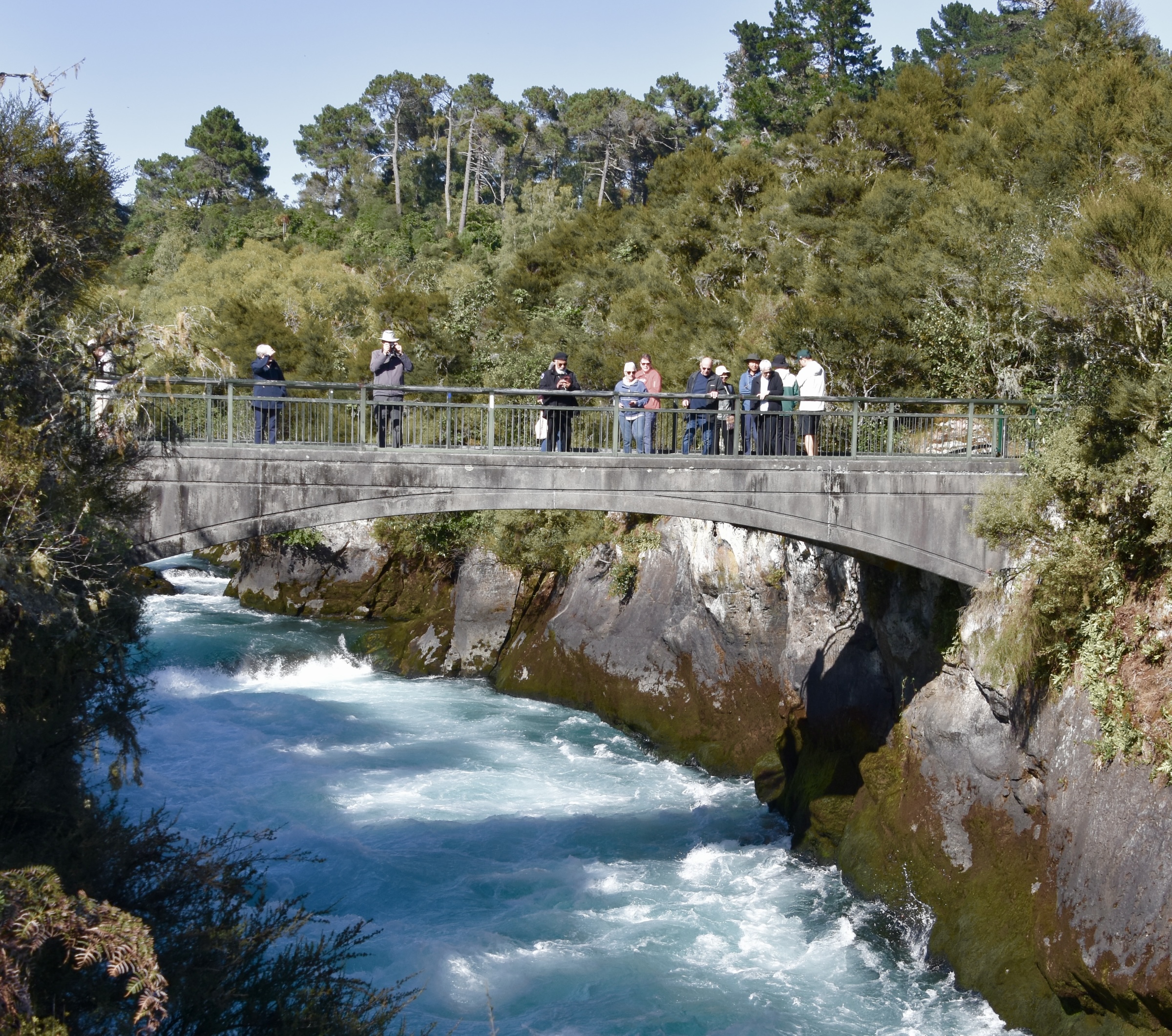
Huka Falls is one of New Zealand’s most interesting waterfalls, not because of it’s height, (we’ll see many that are much higher later on in this trip), but because of its immense power. It’s actually a two fold attraction. The first is to view the point where the Waikato River is forced through a narrow gorge that creates a veritable cauldron of rushing water of such magnitude that it would fill an Olympic swimming pool in 11 seconds. That’s our group on the bridge that spans the gorge.
I was taking a picture of Alison on this bridge when she got photo bombed by our prankster guide Chris Tripodi who loves to do things like this. What a great looking couple!
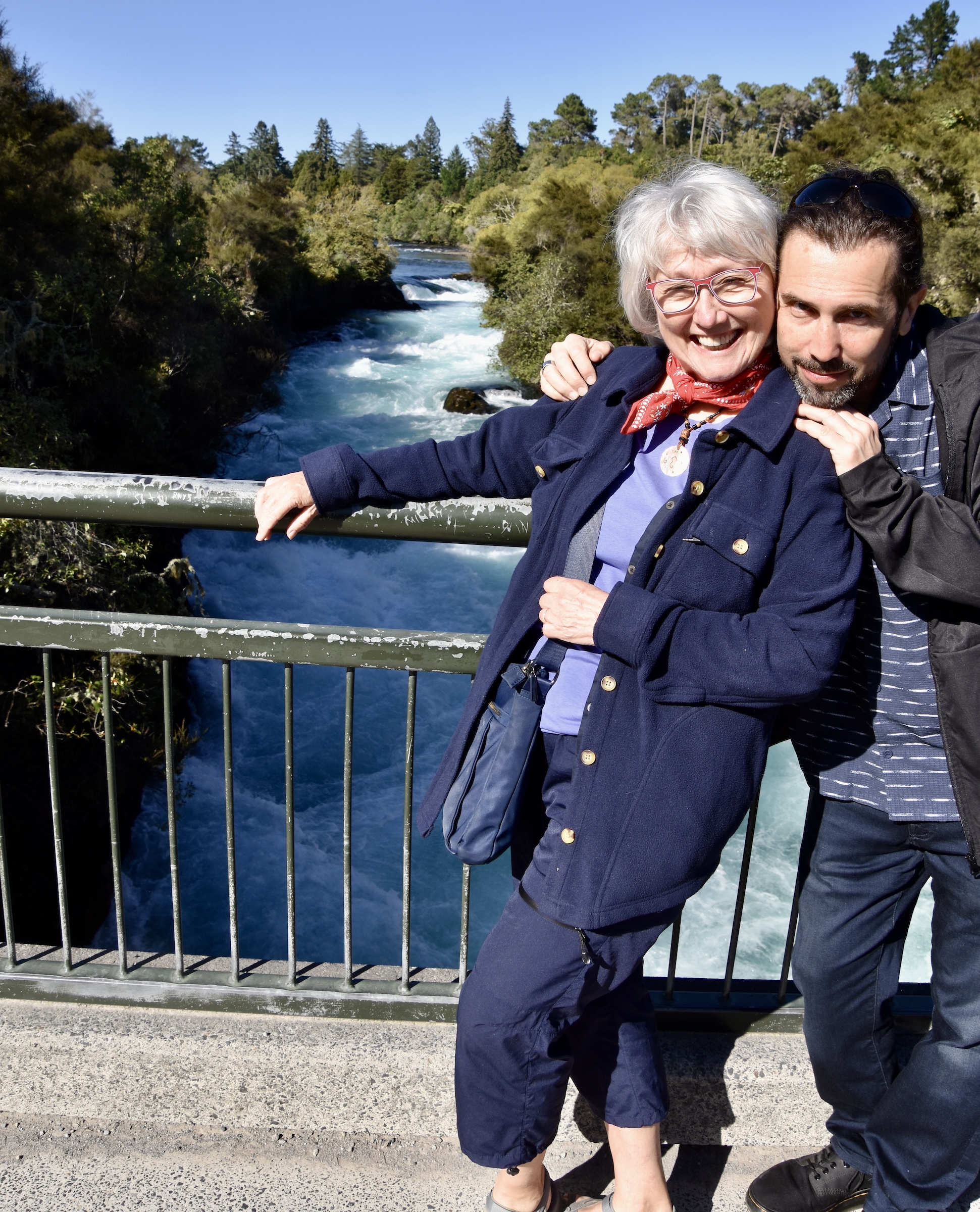
At the end of the gorge the river does plunge 11 metres (36 feet) down, shooting up mist to create a rainbow. Note the beautiful blue hue of the water that is caused by both its clarity and the air bubbles that intensify the effect.
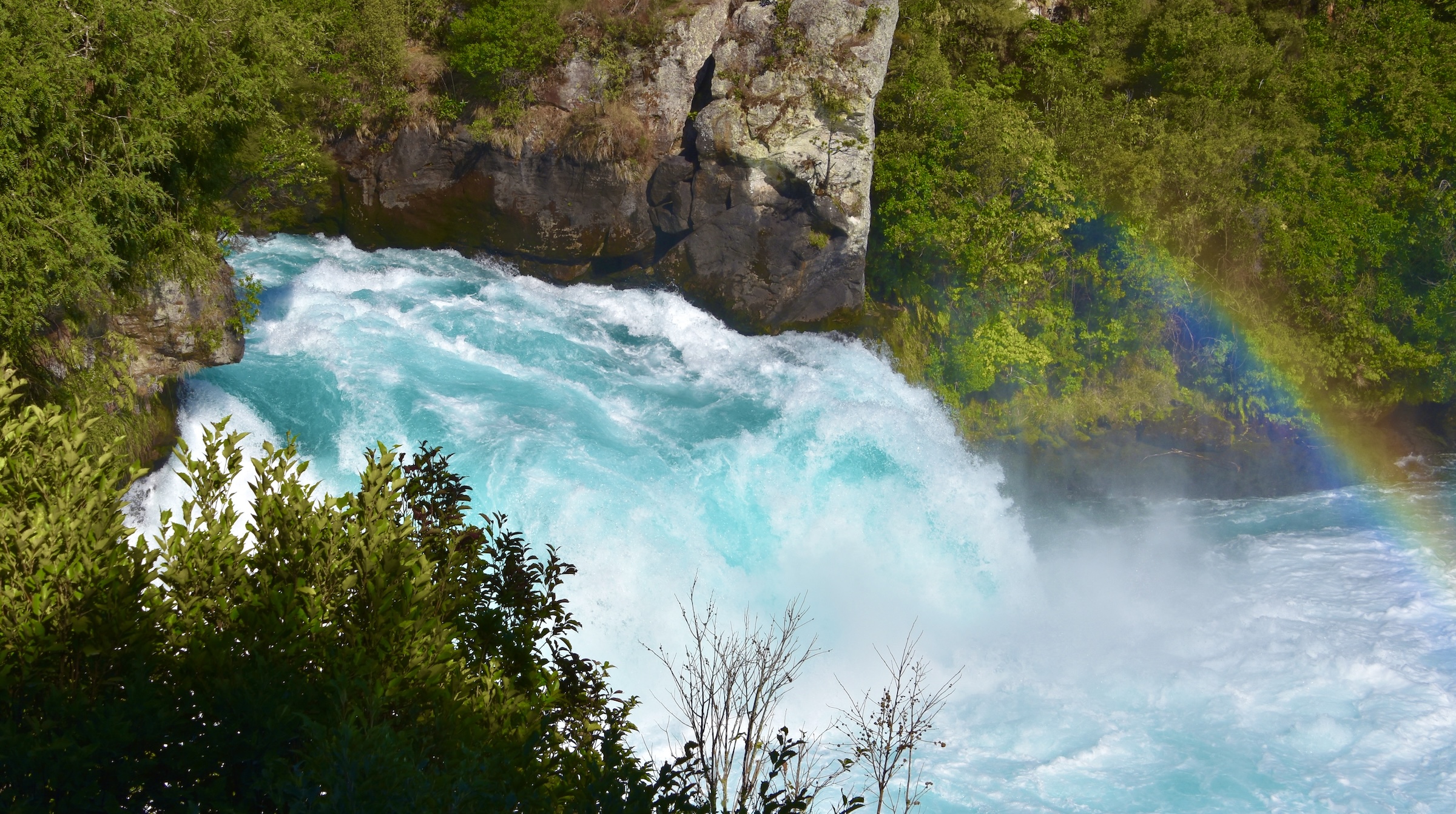
Another way to experience Huka Falls and a top attraction in the Lake Taupo area, is to take a jet boat right up to the bottom of the falls. As it happened one did come by just as we arrived at the viewing platform. Even over the roaring of the falls we could near the screams of the drenched passengers below. Later on this trip we’ll take our own jet boat ride and find out what all the screaming is about.
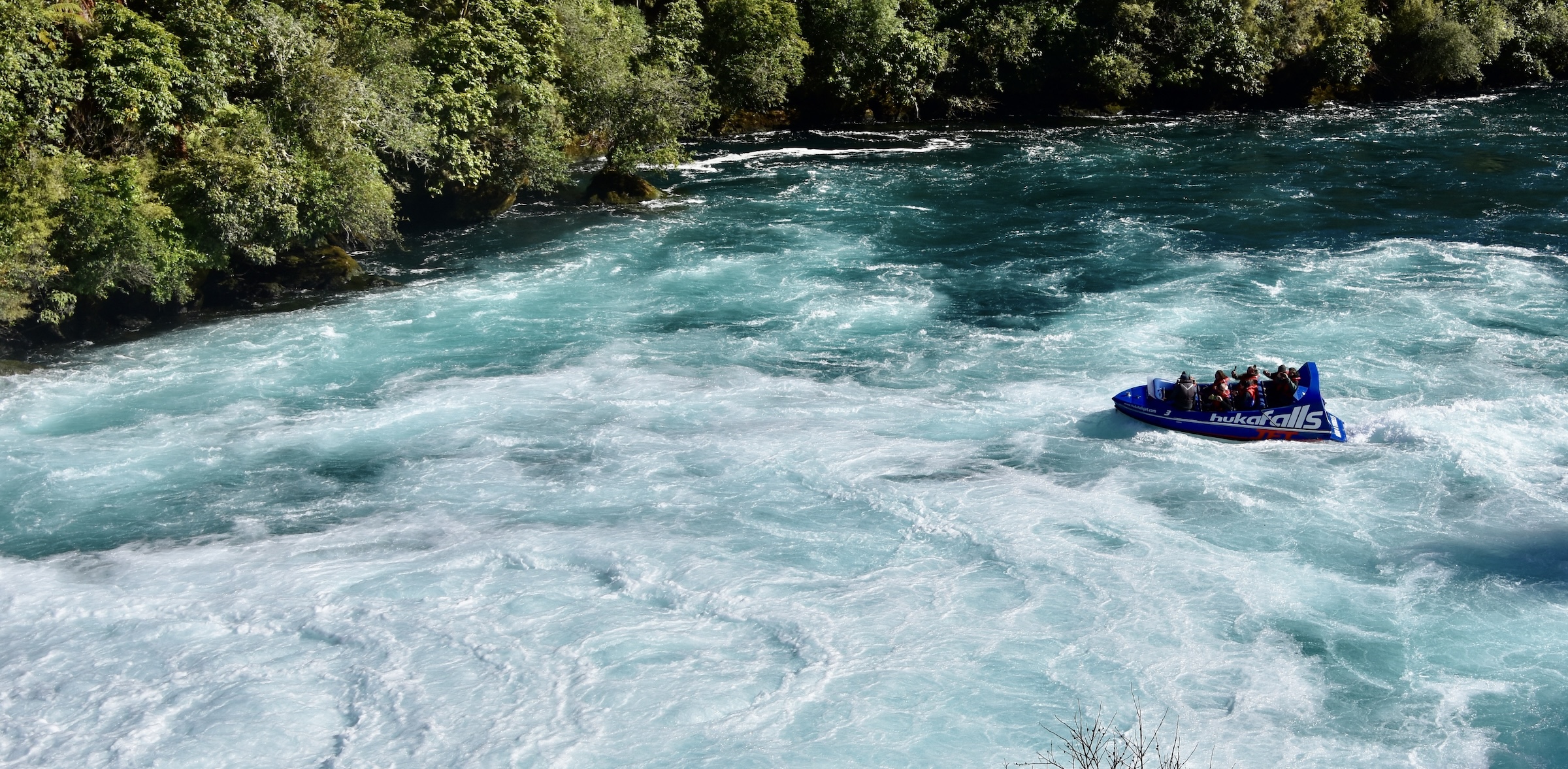
Lake Taupo

Not far from Huka Falls we come to the town of Taupo on the shores of Lake Taupo, the largest in Australasia. It’s the caldera of a collapsed volcano that created the largest volcanic eruption on Earth in the last 70,000 years. It’s impossible to imagine the size of an explosion of that magnitude. Here’s a comparison – Crater Lake in Oregon is probably the most famous caldera lake in the world. It’s circumference is 35 kms. (21.8 miles). Well Lake Taupo’s circumference is 193 kms. (120 miles), making Crater Lake look like a veritable dwarf in comparison.
Looking at Lake Taupo for the first time, I could not help but think of another beautiful lake caused by a massive volcanic explosion, Lake Atitlan in Guatemala which I visited a few years ago on an Adventures Abroad journey to all the countries in Central America.
We stopped in Taupo for about an hour which allowed enough time to grab a bite to eat and walk along the lakefront where you’ll find this truly amazing modern totem pole or more properly in Maori, pouwhenua. Canadians, or at least this Canadian, tended to think that totem poles are unique to the Indigenous tribes of the Pacific Northwest, particularly in British Columbia. However, they have been used as land markers by the Maori for centuries and like the North American totem poles, depict distinct significant events or histories. This one was carved from a 2,000 year old totara tree by Maori sculptor Delani Brown had been felled 70 years earlier and is the centrepiece of a revitalization of the Lake Taupo lakefront.
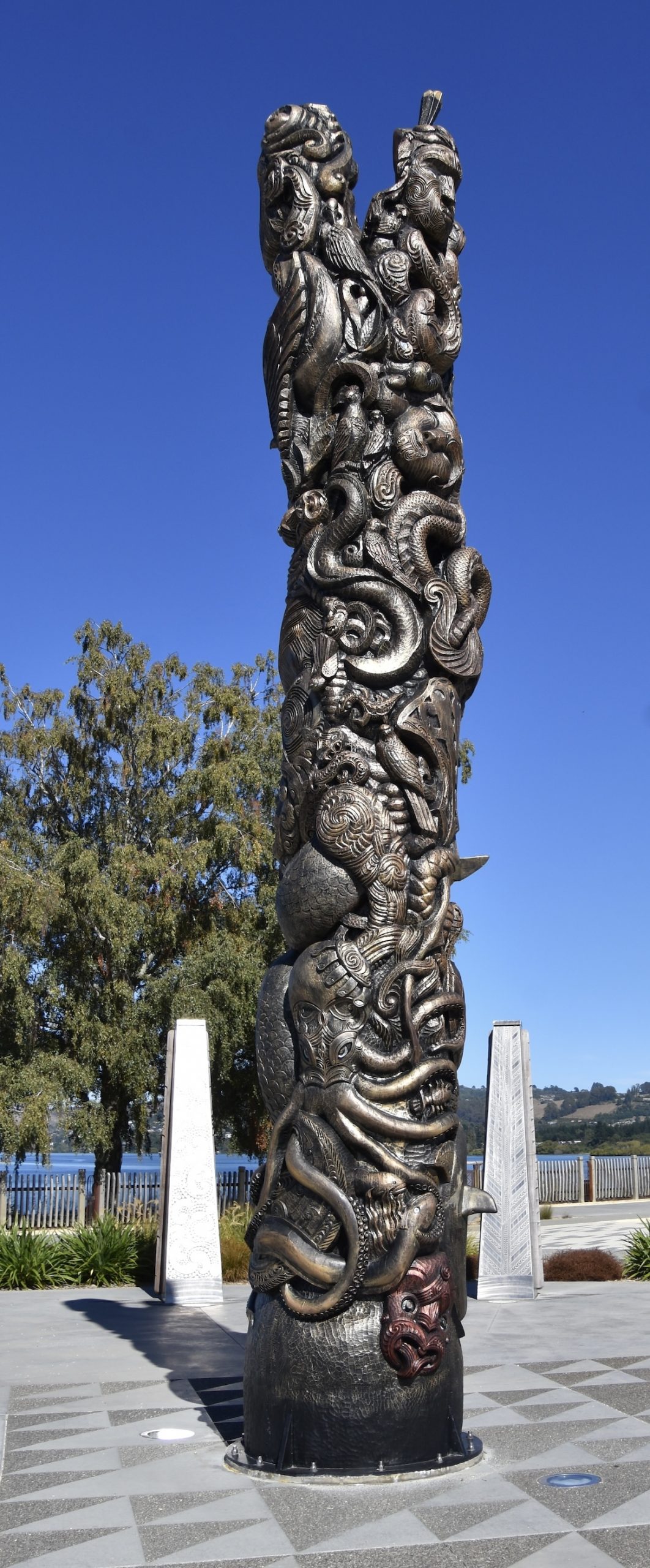
Tongariro National Park

From the town of Taupo the highway follows the shoreline of Lake Taupo for a considerable distance before heading into the very heartland of North Island. About 50 kms. (31 miles) further on we reach the boundaries of New Zealand’s first national park and one of three UNESCO World Heritage Sites in the country. Tongariro National Park was created in 1887 and is the fifth oldest in the world. In 1993 it became the first UNESCO World Heritage Site under the ‘Cultural Landscapes’ designation, recognizing its combination of natural beauty and religious importance to the Maori people. It is an austere landscape that features three active volcanoes. Pictured above is the largest of these, Mount Ruepehu which is both the largest active volcano in New Zealand and at 2797 metres (9,176 feet), the highest point on the North Island. In winter it becomes the largest ski area in the country with three distinct sections on different parts of the mountain.
Unlike Banff or Jasper, your not going to find a sizeable town in the midst of Tongariro National Park. But you will find this anomaly which was built in 1929 and permanently closed in 2023 due to concerns about its structural integrity. The Chateau Tongariro would be the perfect setting for New Zealand’s version of The Shining.
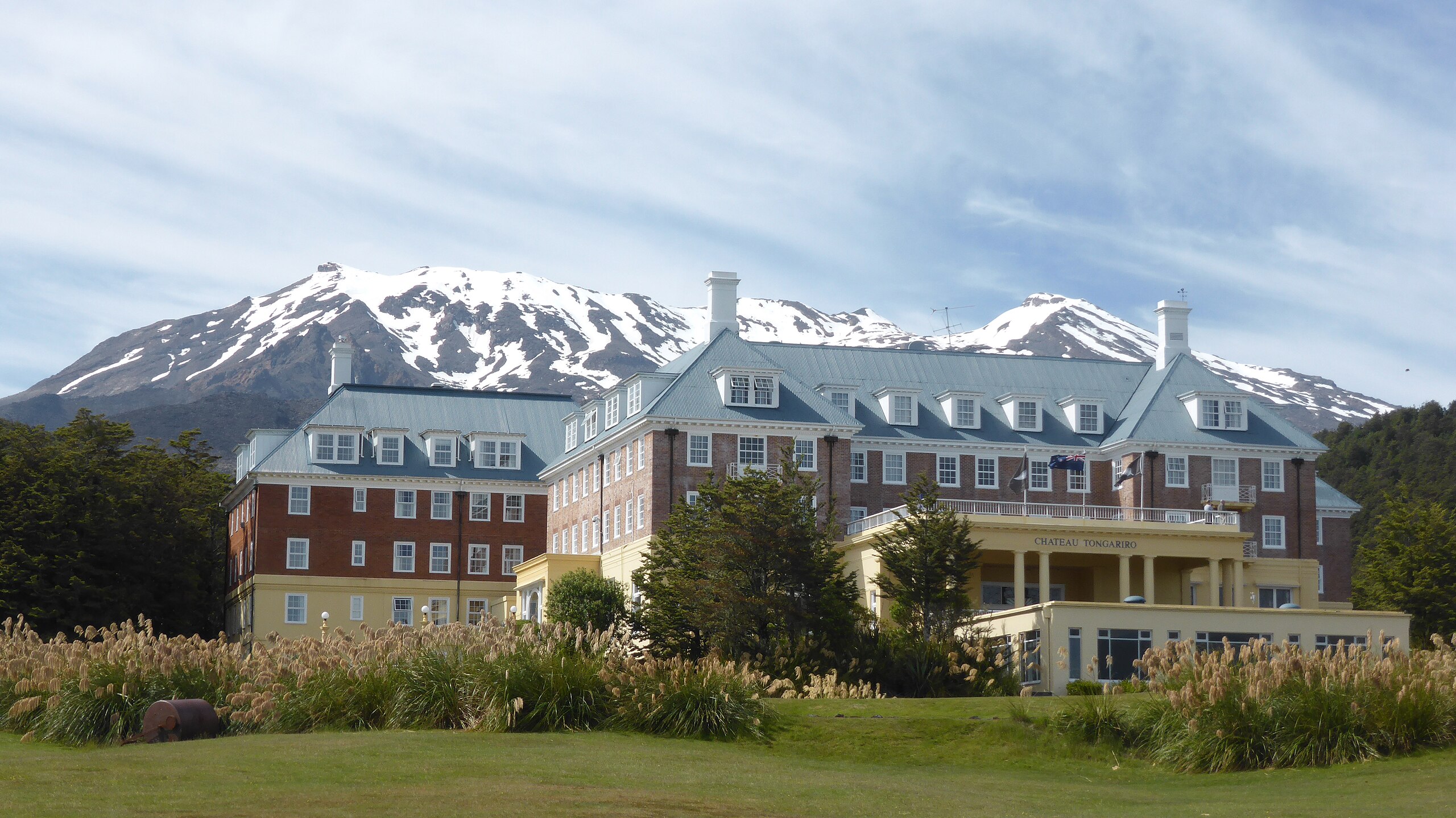
We stopped just a little down the road from the chateau to get a look at what is arguably New Zealand’s most famous mountain, Mount Ngāuruhoe. What, never heard of it? But I’ll bet you’ve seen it, at least in the movies. This Mt. Doom where the infamous One Ring of Lord of the Rings was forged and the only place where it can be destroyed. If you have the time and inclination you too can repeat Frodo and Sam’s climb to the fiery rim to destroy the cursed ring.
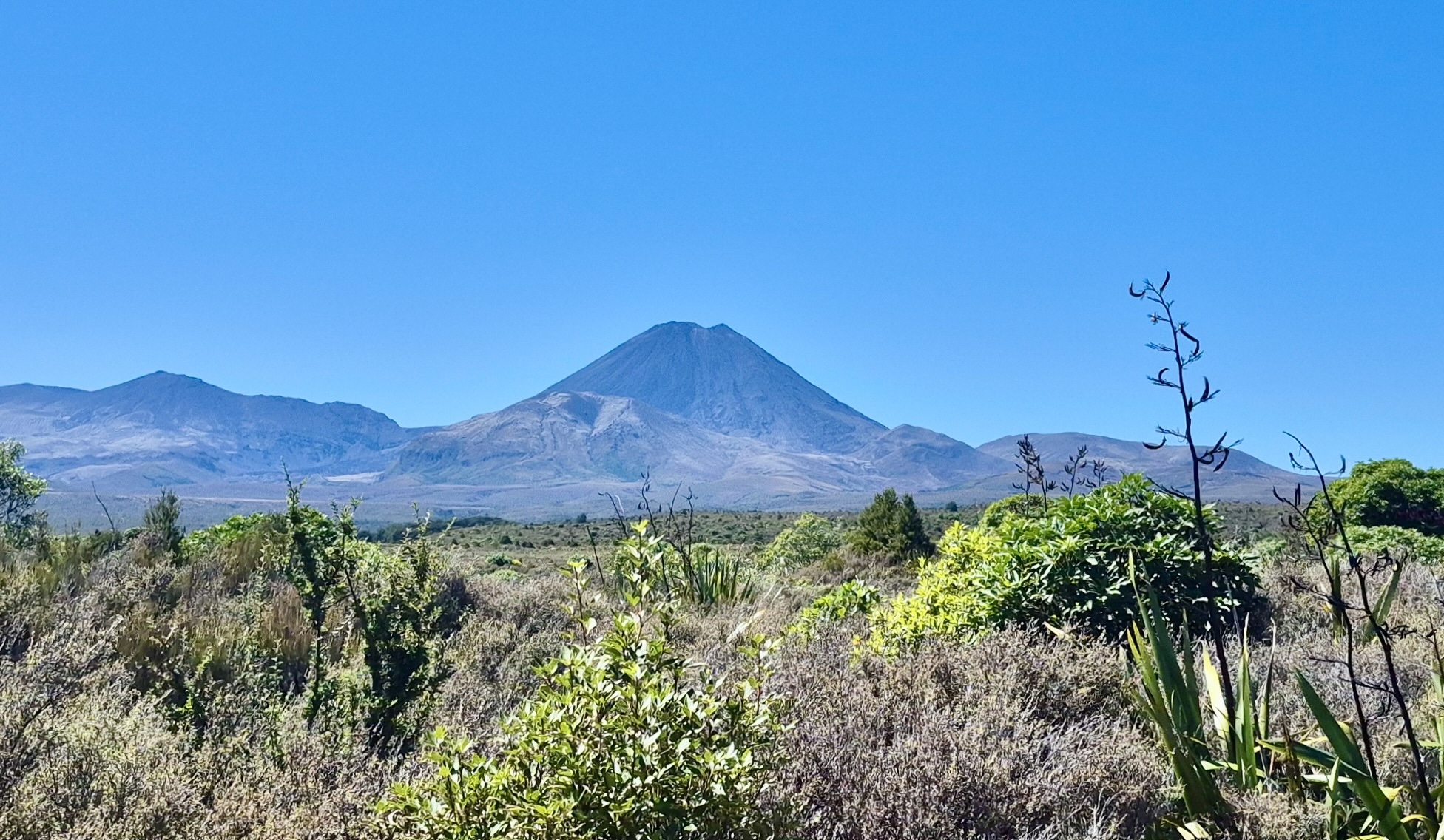
Alas, we do not have the time, or the inclination for that matter, to assault the mount and must reboard the bus for our journey to Wellington where our epic trek through New Zealand will continue in the next post.

